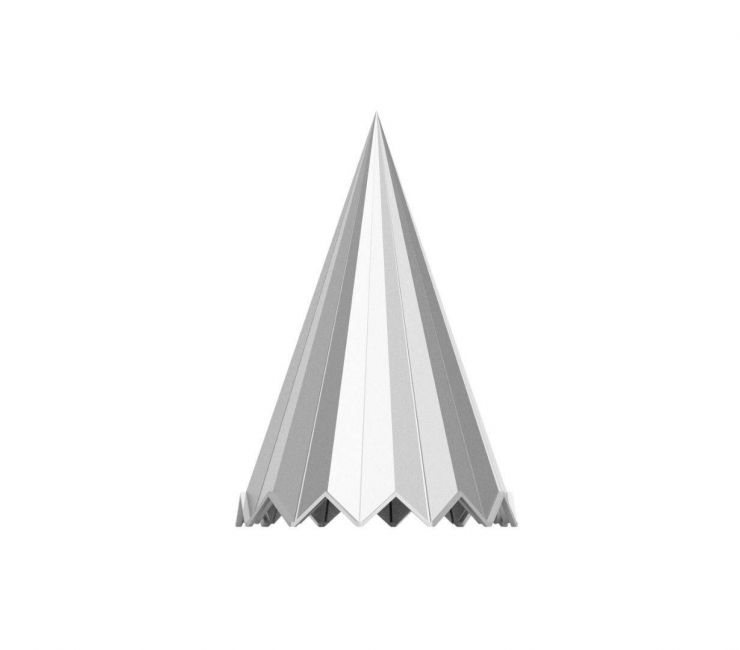Artsakh

submission
Exhibition, Explained | Churches, Cardboard, and Cultural Erasure: A Reflection on Conflict and Heritage
Shant Charoian, an architectural designer from Aleppo, based in Yerevan, holds a Master’s Degree in Architecture from Harvard and a Bachelor's from California State Polytechnic University, Pomona. He earned the Outstanding Senior Project Prize appointed as a Graduate Research Scholar at Harvard's Davis Center for Eurasian Studies. Charoian has conducted workshops at the TUMO Center and his work has been showcased at the GSD Kirkland Gallery. He’s currently working on establishing an architecture school in Armenia.

inPicture
Ghazanchetsots in peril: Shushi’s ‘white bride’ revisited
On May 8, 1992, the liberation of Shushi was celebrated with “Hayr mer” («Հայր մեր» | “The Lord’s Prayer”) at the church altar of Ghazanchetsots.
Bombed during the 2020 Artsakh War, vandalized, and recently dismantled under the pretext of “renovation,” Ghazanchetsots has now become a bleeding wound too painful to look at.
Check out the facts you might not know about the monument's glorious and tumultuous history below.

multimediaGuide
Song | 'Where were you, God, when prayer froze on the lips of my nation?'
Hearts quiver with the questions posed in Arthur Meschian’s uniquely rebellious rock-prayer “Ur eir, Astvats” (“Ո՞ւր էիր, Աստուած” | “Where Were You, God?”), especially after a year of loss, heartache, and looming dangers in our homeland. While many Armenians struggle to come to terms with the catastrophic changes in Armenia and Artsakh, Sandra Arslanian, a Beirut-based Armenian singer, and C-rouge, a Yerevan-based musician, collaborate for a celestial rendition of the song. Why would it matter that a new version of an old favorite was premiered just before the end of the year? H-pem reflects on the origins of the song and the remarkably cathartic new single, with illuminating quotes from exclusive interviews.

submission
#ArtsakhPoemsOnHPem | 'In front of William Saroyan bust' by Varoujan Der Simonian
At a time when people in Armenia are mourning the fallen heroes of Artsakh, one man seeks wisdom from the "crying" bust of the mid-twentieth century Armenian American writer William Saroyan in his hometown, Fresno.

submission
#ArtsakhPoemsOnHPem | 'Vaspurakan’s echo' (Artsakh trilogy, #1) by Harasharzh
Can we expect war to give rise to creative beauty? What is the role of poets in contemporary warfare where sensational media leaves little to the imagination? Do poets still have to bear testimony to war? Stir feelings? Raise arguments? Can war poetry become a path to redefine identity? In "Vaspurakan's Echo," the first poem of the "Artsakh Trilogy," Harasharzh, a young American-Armenian poet, draws answers from history, literature, and the spaces between.

analysis
A brief introduction to Artsakh's culture: Part II – The Artsakh/Karabakh dialect
With the recent outbreak of war in Artsakh, it is now more essential than ever to learn about the history of Artsakh when trying to understand the intensifying situation. Conflicting reports are widespread, misinformation is prevalent, and individuals with suspicious motives are a constant threat in falsifying the history of Artsakh.
Through h-pem and its efforts to inspire young Armenians to learn and embrace the Armenian homeland and its culture, we provide our readers with a brief introduction into the culture of Artsakh, consisting of some essential “facts you should know.” This series is not intended to be exhaustive and we welcome any suggestions for additions you may have!

multimediaGuide
'My Artsakh': How a group of Canadian-Armenian vocalists created an unforgettable mash-up
Chances are you’ve all heard the songs—classics and more recent ballads (six in all) dedicated to Artsakh, its history, its natural beauty, its people, and its heroes... But you’ve probably never heard them as a part of a mash-up! Read all about “My Artsakh” in this h-pem exclusive!

submission
Photography | Artsakh through Souren Papazian's (iPhone) lens
In the summer of 2016, Souren Papazian, a then-recent grad from Columbia University’s Computer Science program, was placed in Artsakh for three weeks as a part of his community work as a Luys Foundation scholar.
“I found the people of Artsakh to be very different from folks in the rest of Armenia—different even from spyurkahais [Diasporan Armenians]. Just a different mindset and philosophy: reserved but kind, they don’t talk much, very into nature,” he explains.
Souren’s submission to h-pem is a series of 17 photographs taken on his iPhone during those three weeks in Artsakh—a collection of the faces and places that spoke to him most.

feature
Rebirth Armenia: This is our 'vrezh'
In remembering, learning about, and visiting our ancient homeland of Western Armenia, Armenians are often struck with grief and a desire for revenge. Two diasporans from the U.S. began the quest for this revenge with a project, raising awareness of pressing issues and areas under threat in Armenia. They soon found themselves joining forces in a strong non-violent resistance movement, and have been traveling the regions of Tavush and Artsakh for three years, telling stories of strength and determination.
Join our community and receive regular updates!
Join now!
